Thirty five years ago, my father was outside the Pilot in Greenwich. Located on the peninsular which now has the O2 Dome at the northern tip, the Pilot is one of the very few original buildings left after the recent and ongoing development of the Greenwich peninsula.
The Pilot pub in 1985:
Last week I returned to the Pilot to take a comparison photo and for a beer. Although redecorated, and no longer a free house, the pub looks very much the same.
The Pilot is at the end of a short terrace of houses, originally going by the name of Ceylon Place.
The location of the Pilot, and the terrace is shown in the following map, marked by the red oval. The O2 Dome is at the top of the peninsula (Map © OpenStreetMap contributors).
From the above map, it is hard to appreciate the level of development on the peninsula. The O2 Dome, or Millennium Dome as it was, kick started development of the area, and after a use was finally found for the dome as a major London concert venue, development on the peninsula has been a permanent activity, with apartment towers, offices and hotels of strange design rising from this once industrial landscape.
The Pilot and the terrace at Ceylon Place have are remarkable history, dating back to the early development of this part of Greenwich. The level, and type of change over the last couple of hundred years has been such that the pub and terrace have been surrounded by incredibly different landscapes.
We can explore these by looking at maps. The above map extract shows the area now dominated by the O2 Dome, and the associated developments, however, going back to 1951, and this was a very industrialised place. The Pilot and terrace is highlighted by the red oval in the following map extract (Following maps: ‘Reproduced with the permission of the National Library of Scotland’:
There are a few other terraces, in addition to Ceylon Place, however the majority of the land is occupied by Gas Works, Tar Works, Electricity Generation, a Steel Works, and many other smaller industrial sites. The following map extract is an enlargement of the area around the Pilot and Ceylon Place, which are in the centre of the map.
The pub and terrace face onto River Way which leads down to the Thames. A cooling pond occupies much of the space directly opposite. A railway runs to the west, Behind the terrace is a steel works.
Much of the development of the peninsular was during the later part of the 19th and early 20th century. If we go back to 1893, we can see the start of the industrialisation of the peninsular.
The Pilot pub and Ceylon Place can be seen, with a longer terrace that stretched to the east. Much of the immediate surroundings are open space, and the railway has not yet arrived. The area to the south are the Greenwich Marshes.
Looking at an extract from the above map, we can see the terrace in 1893, with the Pilot (labelled P.H.) at the western end of the terrace as it still is today.
At the eastern end of the terrace, there is a large building called East Lodge with open space leading down to the river and bays on either side – presumably bay windows to provide a good view of the Thames.
The majority of the terrace, and East Lodge would disappear in the coming years. By the 1913 Ordnance Survey map, East Lodge had gone. and by 1939 much of the terrace had also been lost, leaving only Ceylon Place we see today, and the Pilot pub.
In all this time, the Pilot has looked out over a very different landscape. Once surrounded by open space and marsh land, the Pilot was then surrounded by some of the most polluting industries to be found in London, then as industry in the area closed, the pub looked out on a derelict landscape.
Today, the Pilot looks out on yet another very different landscape. A ten minute walk from the O2 Dome, in the middle of a green space, and in the process of being surrounded by tower blocks of ever more outlandish design.
The Pilot and the terrace date from 1801. A plaque on the front of the pub to the upper left of the main entrance confirms the date, the name Ceylon Place and New East Greenwich which was the name given to the development, as it was expected to form the basis of a larger development.
The main body of the pub is original, however, as will be seen when comparing my father’s photo, and my photo below, a smaller extension to the right has been added. This now provides accommodation, so if you want to stay on the Greenwich Peninsular, there is an option with a pub attached.
The London Metropolitan Archives Collage collection has a photo of the Pilot and terrace dating from 1979. The Pilot looks the same as in my father’s photo, with the same pub sign, however look closely at the terrace of houses and you will see three of these have their window and door bricked up. The 1970s and 80s were the time when industry in the area was in significant decline, and it is surprising that the terrace has survived to this day.
Image credit: London Metropolitan Archives, City of London: catalogue ref: SC_PHL_02_0976_79_5000
The street in front of the pub and terrace now ends in a dead end, rather than running down to the causeway that ran into the Thames. Today, blocks of apartments now separate the Pilot and terrace from the river that for much of their time, must have been a significant influence on the lives of those who lived in the houses and drank in the pub.
We can get a good idea of life in the terrace and pub by looking at old newspaper reports. When first built, the rear of the terrace looked out onto the Greenwich Marshes and a maze of ditches draining into the Thames, however in July 1857, the Kentish Mercury reported that:
“The inhabitants of Ceylon-place, East Greenwich complain of the very offensive state of the ditch at the back of their houses. They inform me that this ditch, like all other ditches on the Marshes, was formerly flushed out at every tide, but since Mr Wheatley has lately stopped up a sluice at the entrance to the ditch. The water is, therefore, become stagnant, and is certainly in an offensive state, and thereby causing the nuisance complained of”.
There were the day to day events that would have had significant personal impact, to those who lived in the terrace. On the 30th May 1840:
“POOR MAN’S LOSS – On Saturday evening last, as a poor labouring man was going home, after work, he lost the whole of his wages, amounting to 30s, besides some papers which, to the owner, are of consequence. The finder of the documents would be doing an act of great kindness by forwarding the same to No. 3, Ceylon Place, Greenwich”.
There was the type of crime common when drink was involved. In March 1903 the Woolwich Gazette reported that:
“Frederick Boos, a foreign seaman, of s.s. Hendon, was charged on Thursday at Greenwich with assaulting a waterman, named Russell Lewis, of 6, Ceylon Place, East Greenwich. The victims head was bandaged and he said he was suffering from several bad cuts, said the prisoner hit him several times without any provocation. Boos alleged that the prosecutor had been making false statements about him and that he (Boos) was drunk at the time – Two months hard labour”.
The victim, Russell Lewis is recorded as being a waterman of Ceylon Place. Checking the census data reveals that this was a common occupation for those living in the terrace in the 19th century. In the 1871 census, there were several watermen, and watermen’s apprentices among the occupants of several of the houses.
Another mention of a Waterman living at Ceylon Place is from the Kentish Mercury on the 3rd April 1885: “A PUGILISTIC WATERMAN – Charles Watkins, waterman, of 8 Ceylon-place, East Greenwich, was charged on summons of assaulting another waterman named Richard Preddy. The complainant said he was sitting on a seat at the Anchor and Hope Wharf, waiting for a ship to come up the river. He heard footsteps and saw Mr Watkins, who pulled off his coat and wanted him to fight; he told him to put on his coat, when the defendant struck him in the face, and then they both fell over the seat”.
Charles Watkins was fined 20 shillings with 2 shillings costs for the attack.
The majority of the other inhabitants were recorded as being labourers. One, a Mrs Elizabeth Elliott, widow, aged 74 was on the Parish Poor Relief. This was a very working class terrace.
There were other professions, perhaps unexpected in such an industrial area. In 1901, a resident of Ceylon Place was up before the Lord Mayor:
“THE SERIOUS CHARGE AGAINST A GREENWICH MAN – At the Mansion House on Thursday last week, Charles Rayner, aged 23, described as a music-hall artiste of Ceylon-place, Greenwich was again before the Lord Mayor on the charge of being concerned with another man in stealing £10 from the Falstaff Restaurant, Eastcheap”.
Publican’s were in danger of prosecution if they continued to sell alcohol to those already drunk, and in July 1908, in an article entitled The Peril of the Publican, it was reported that:
“Mary Ann Millington of the Pilot public-house, Ceylon-place, East Greenwich, was summoned for selling intoxicating liquor to a drunken person, and for permitting drunkenness”.
Mary Ann Millington was fined 40 shillings.
When they were living in the terrace, Charles Watkins and Charles Rayner, would have looked out on a rapidly industrialising area, but they would have still been very familiar with the last of the fields and marshes on the peninsular, and the causeway down to the river at the end of the longer terrace would have probably been used by many of the watermen of Ceylon Place.
Looking north from the terrace, the view would have been of cooling ponds and gas works. Today the view is of a park.
And replacing the electricity generating station, and steel works are now rows of apartment buildings, which also block off the direct access to the river that the watermen of Ceylon Place formerly enjoyed.
At the eastern end of the terrace. an old, painted sign provides a faded view of the original name of the terrace.
The view of the terrace hidden behind trees on the walk down from the northern tip of the peninsula:
The park is now established, but all along the eastern edge of the peninsula, building is continuing and the park is fenced off from numerous building sites. The following photo is the view looking north from the same position as the above photo. Tall buildings can be seen in the distance, to the east of the O2 Dome, and the building sites to the right are fenced off, so many more tall apartment buildings will soon overlook Ceylon Place and the Pilot pub.
The Pilot is a really lovely pub, with an open terrace at the rear which was perfect on a warm August afternoon.
The Pilot and Ceylon Place have been here for over 200 years. They were:
- Built when much of the Greenwich Peninsula was still field and marsh
- They saw the building off, and were surrounded by some of the most polluting industries in London
- They saw the decline of these industries and the derelict state of the much of the peninsula
- The Millennium Dome came to the end of the peninsula
- They are now being surrounded by towers of apartment buildings, but with an open space providing a view to the north
I suspect one of the watermen, or a worker in the industries on the peninsula would never have guessed what the place would look like today, and likewise, we probably have no idea what the peninsula will be like in one or two hundred years time, but I hope the Pilot and the Ceylon Place terrace will still be there to see how this part of London develops.


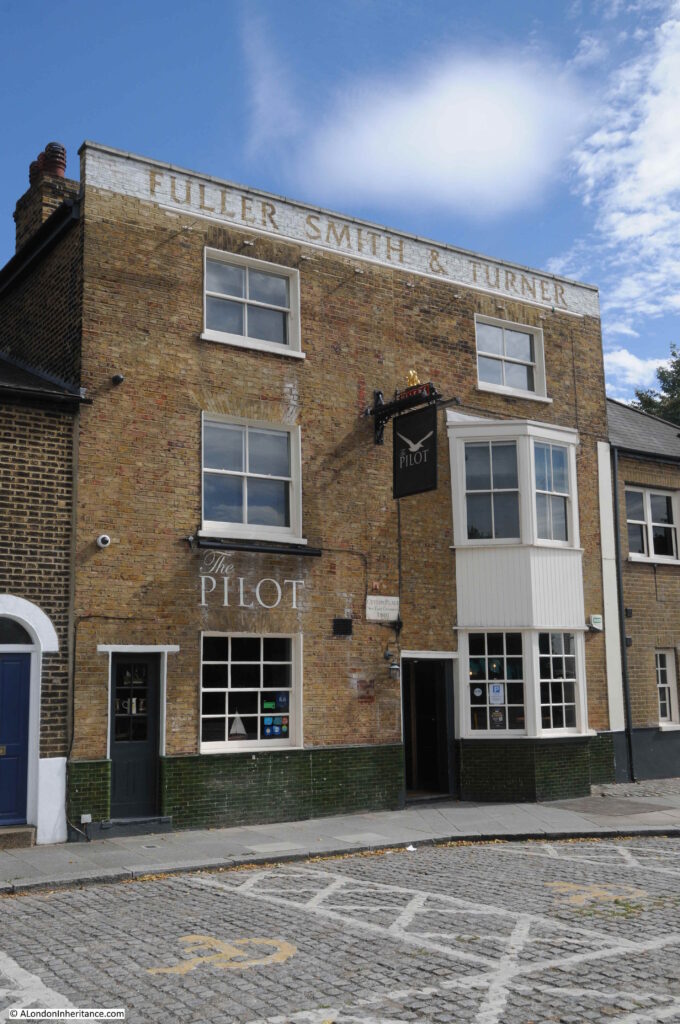
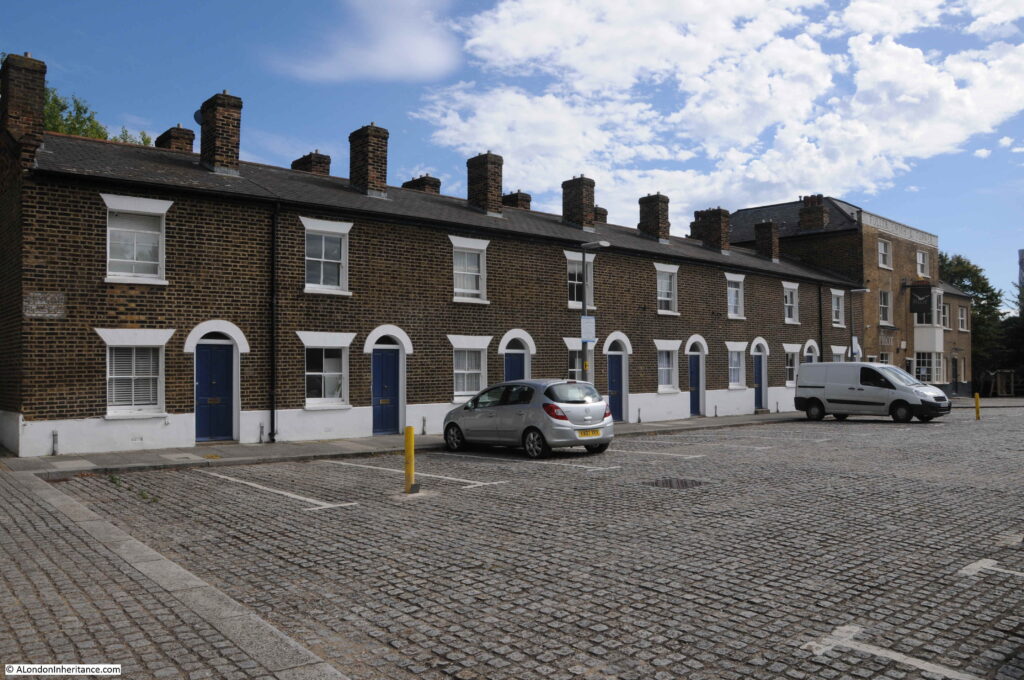
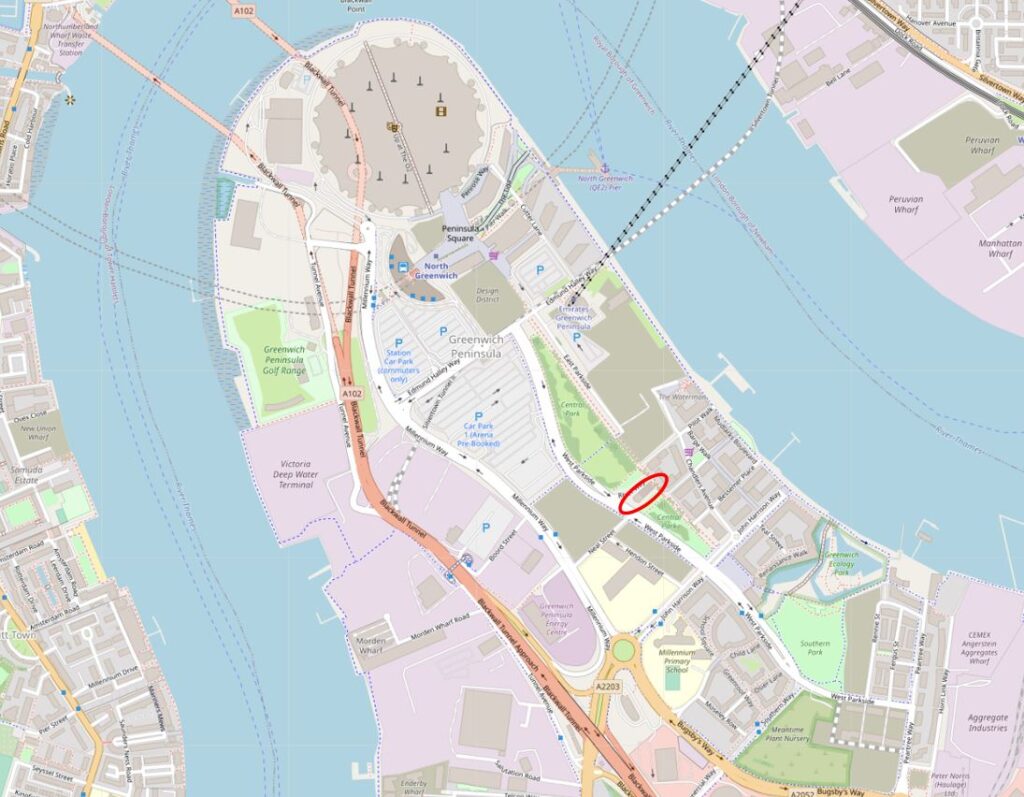
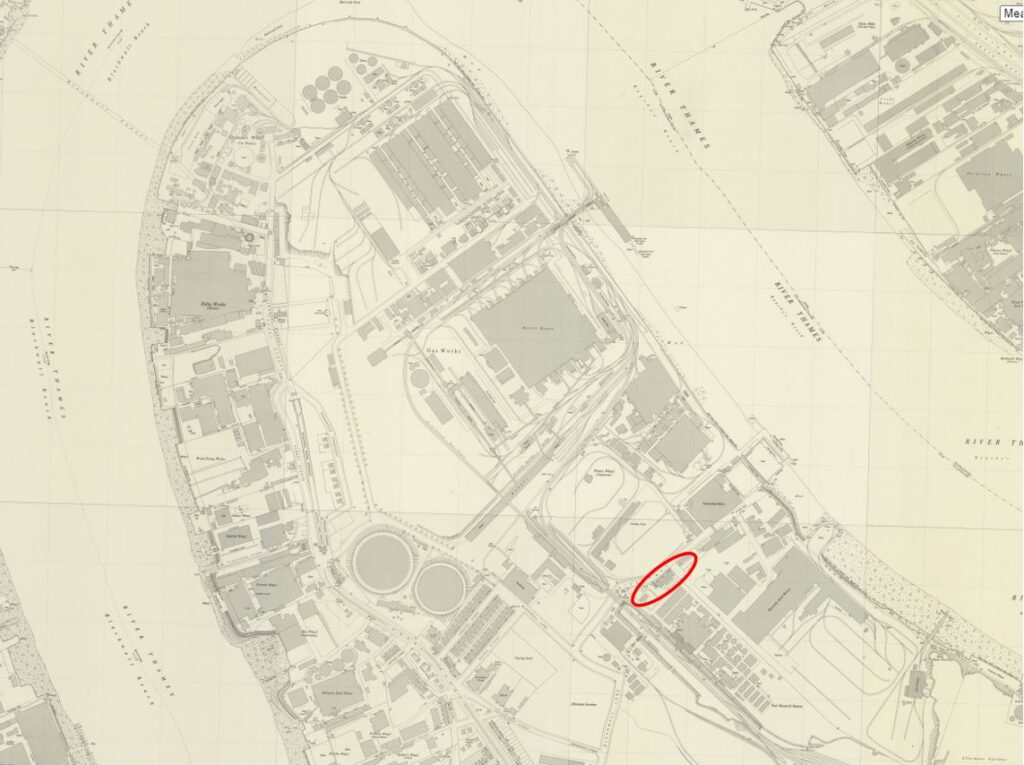
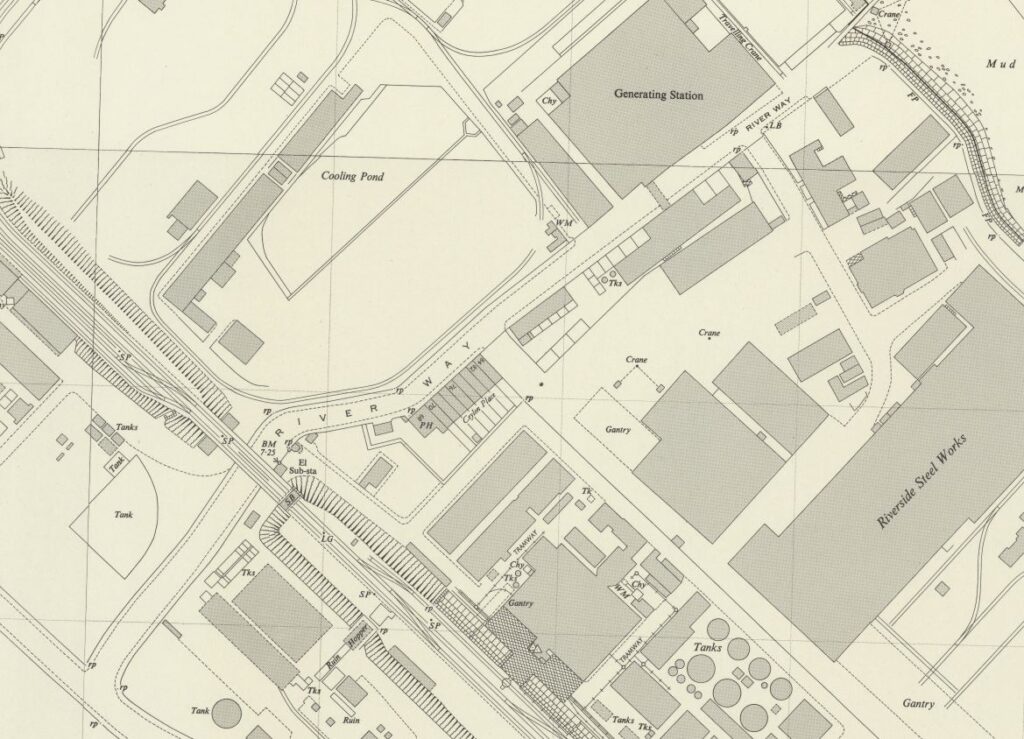

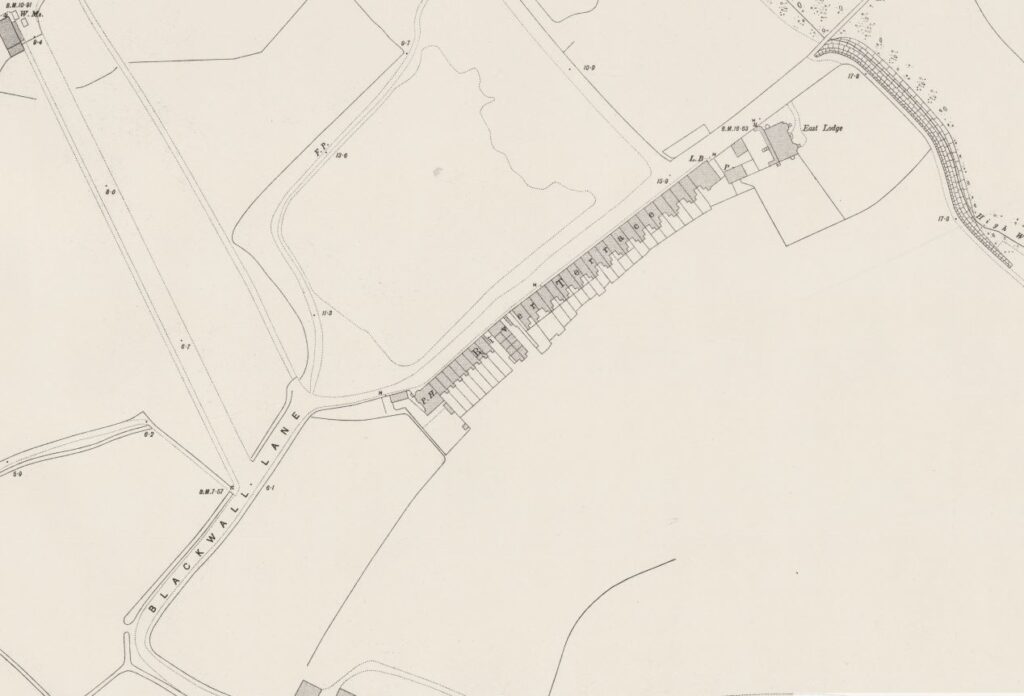


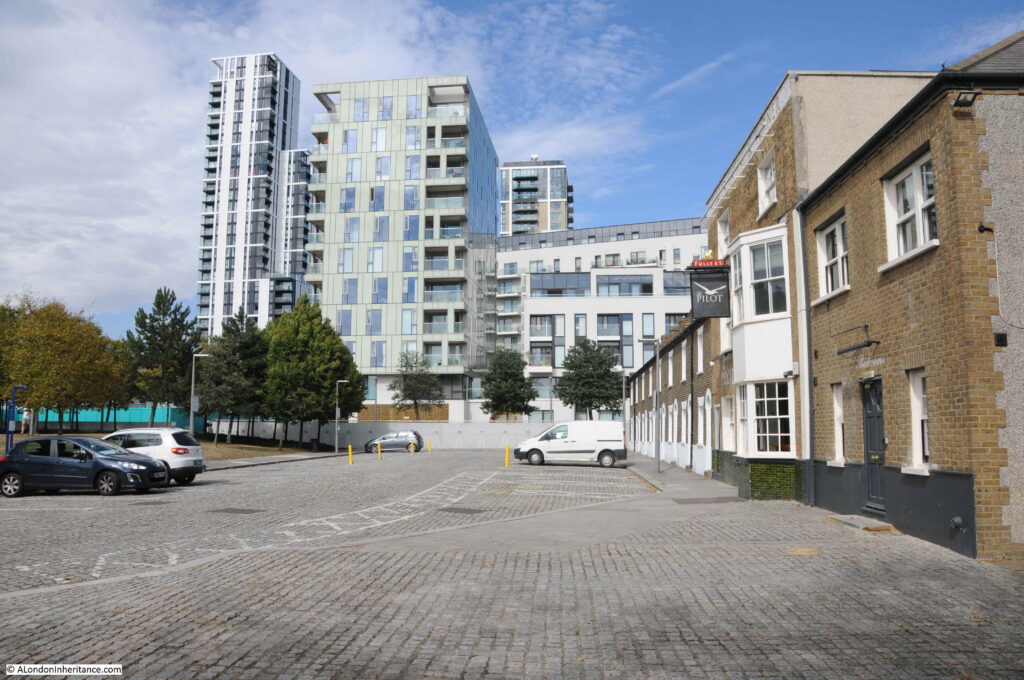
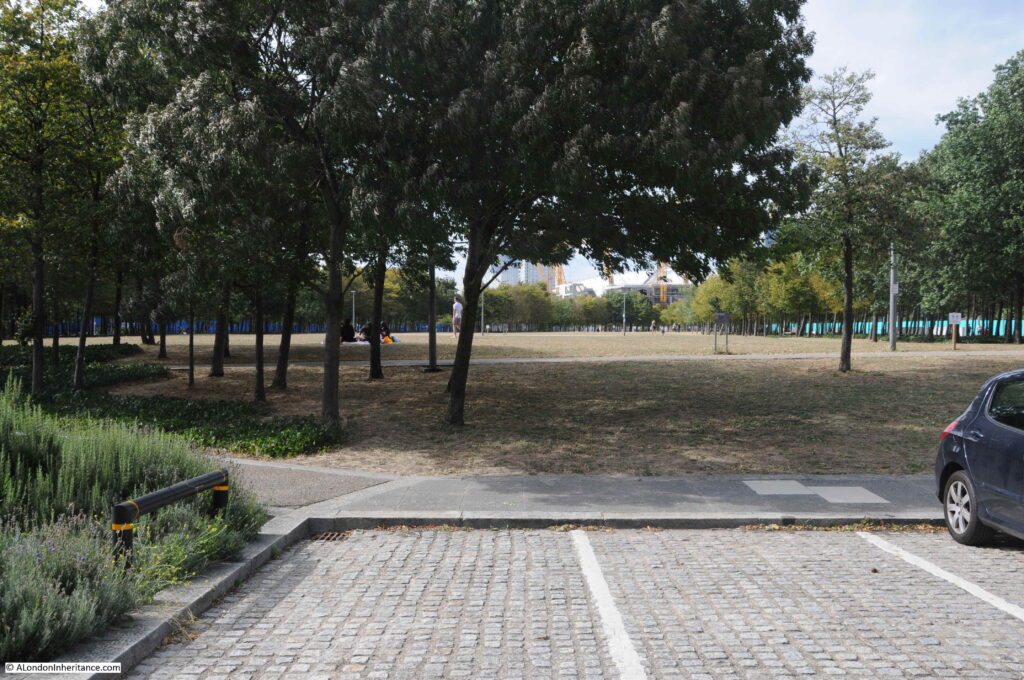


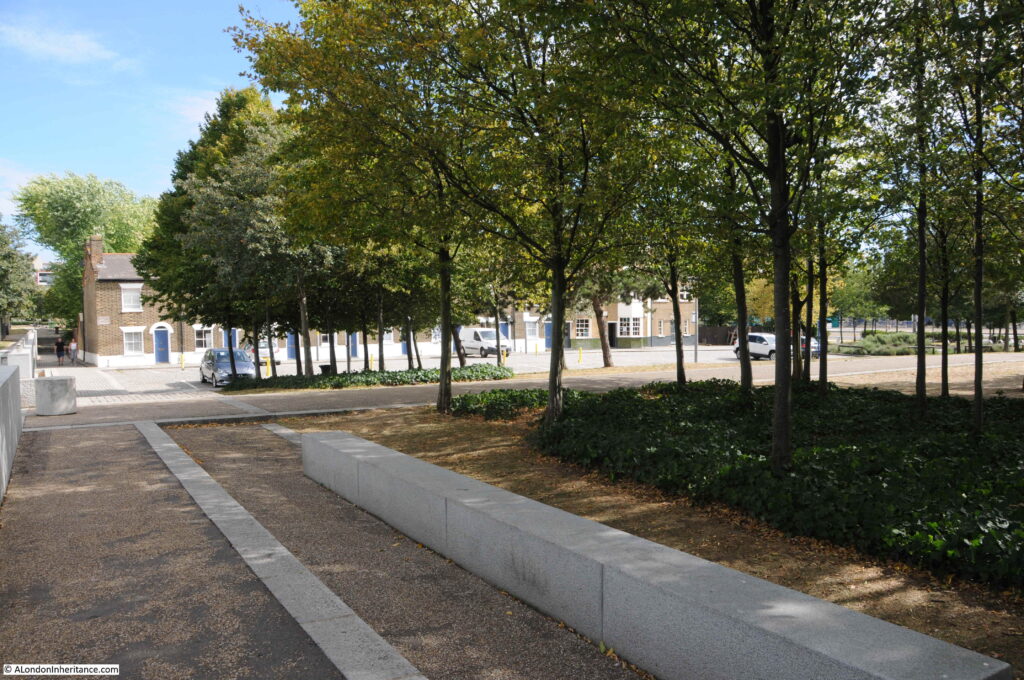
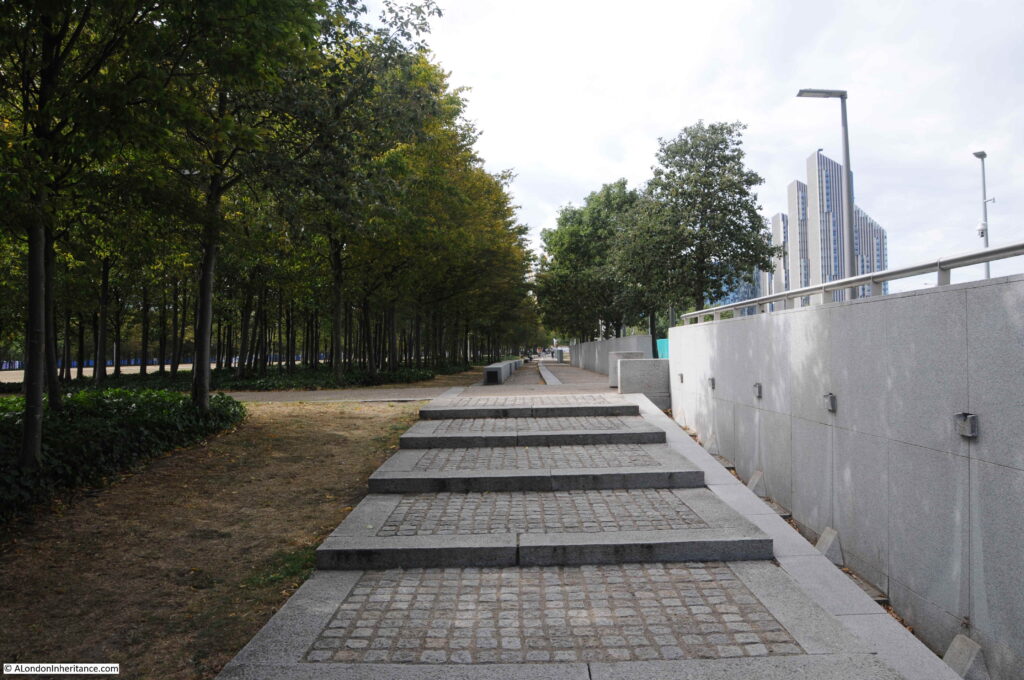
Oh – Mr /s London Inheritance, I have written and written and written about that terrace! Have your searches found nothing I have done? It was me got them listed in 1998(?). The pub is so altered as to be unlistable. I published a booklet called ‘The Jetty’ and also a major academky article about the mill (the cooling pond is a relic of the mill ponds) they were built for in London’s Industrial Archaeology No.17. And (advert) I have a proper book in the process of going off to Amazon.
Two things – I think ‘The Pilot’ is William Pitt ‘The Pilot who weathered the Storm’ – partly about Ceylon. East Lodge is interesting, I think it was rebuilt and was at one time a yacht club (and again later when the present Greenwich Yacht Club were in the steel works canteen). Of major importance though is when the boiler of Richard Trevithick’s boiler blew up here in 1803 – and accident which is said to have changed the history of the steam engine . Could go on for hours. Complete detailed site analysis any time. Peace and Love Mary
Dear Mary, My mother’s aunt and uncle, Florence and Lawrence Harbutt ran ‘The Pilot’ during the 1960s. The pub was actually licenced to their son, also a Lawrence. We stayed at the pub in 1961 on a visit to the UK. My memory is somewhat vague (I would have been eight at the time) but I do remember helping my great aunt lining up pints of bitter along the bar in readiness for the influx of punters at shift’s end at the local gas/coal works. As far as I can remember a pint cost ‘two bob’. Most men took two pints, one to quench their thirst and drunk almost immediately, the second to be taken more slowly whilst socialising. Having stated that you have written previously on the area I would be really grateful for any recollections or information you could offer me. You may contact me through my email: My thanks in advance, all the best, Kim.
Kim, Mary, I have deleted Kim’s email from the comment as the comments are public. If Mary let’s me know, I will forward the email address directly.
Almost all that I have written about the area is from the 19th century – I don’t have the sort of 20th century memories which I think Kim wants. Happy to advertise my books about the area but they are about owners and industry . Its not reminiscence based. I do have some pictures I was given about some sort of festival in Riverway – lots of union jacks, and bunting and children’s races – happy to share them. I also have some memories from some sisters who lived nearby in the 1870s and did a family newsletter.
Hi Mary. I’d be interested in the pictures of the festival in Riverway, and the family newsletter from the 1870s. My wife’s ancestors lived in Ceylon Cottages in the 1860s and 1870s. Many thanks.
– oh – and ps – you missed the ‘New East Greenwich’ plaque on the pub. Developers were here in 1801 too.
The Pilot is a smashing pub, and handy if you’re visiting the O2 and wish to avoid the over-priced horror contained therein.
Don’t tell everybody about it.. oh, too late!
Excellent article as always.
One of the more recent claim to fame for the grade II listed Ceylon Cottages is their use as the backdrop to Blur’s ‘Park Life’ music video.
https://youtu.be/YSuHrTfcikU
Always interesting – thank you. It is self-evident that the local environment has improved beyond what the old residents may have imagined but why are tower blocks that form a wall along the river allowed to cut off what was always there for everyone? It says a lot about the values of our society.
Whilst your father’s photograph clearly depicts this as a free house in 1985, I wonder if it had previously been a Youngs tied house ?
The plaque to the left of the door in the 1985 photograph looks very like the Youngs’ Ram emblem.
As always, a fascinating Sunday morning read.
As usual, a fascinating read – thank you! This has really brightened up my morning.
Fascinating. I particularly liked the focus on the different views that visitors to the Pilot pub would have looked out on over the years……marshes, smokey small industries, dereliction, then expensive looking tower blocks. Spot which is the non organic alien development !
Thank you for your research and sharing.So little must exist in London that myself and other older Londoners would recognise anymore.
I ought to shut up -sorry. Can’t resist it though. I don’t think it was ever a Young’s Pub. Will see what I can find out. It is actually now about three times the size inside as it was in 1975! and it has a garden.
The road to the river was cut by the New Millennium Experience Co in 1999. They wanted all traces of the past removed from the area -hence there is a hill where the mill ponds were. They were really angry when we got Ceylon Place listed (oldest work place related cottages .. etc etc) and I had to put up with abuse from the landscape designer. There was a water feature on the wall, but it didn’t work. The cottages at the time of the Blur video were full of would be Britartists from Goldsmiths (squatting ??).
The industries around it were not small – largest gas works (arguably) in the world. Major power station at the end. Behind the pub huge structural steel works, Coalite plant, Coal Research Centre – and a railway. Did your Dad take pictures of the railway? – from Blackheath Station to the Dome, and so they demolished it. (old tech again)
The plaque does say ‘Youngs’ – although maybe that was simply one of the beers they sold at the time…
Mary, please do not shut up – your depth of knowledge of Greenwich is fascinating and I always learn so much from your feedback. In researching the post, I did find one of your articles on Ceylon Place, with information on the mill etc, however I do not like using other peoples work and research unless I can also find the details in a map, old newspaper etc. Researchers such as yourself have done the work and should get the credit. What I will do is add a link on my post to direct readers to yours.
Thank you for your work to get Ceylon Place listed. With everything else going on along the peninsular it is so important that something remains – far too much has been lost.
My father did take other photos around the area, I am in the process of scanning.
I will look out for your new book and look forward to reading. Thanks again for your feedback – David
Hello David,
thank you very much for this great, interesing post!
“… My father did take other photos around the area …”
I am especially interested in a certain building, that may have been standing north of The Pilot, not too far away, until the early 1990ies. It was the main filming location of the movie ‘The Cement Garden’ (shot in 1992, after Ian Mc Ewan’s novel). All scenes in the movie are thoroughly cut to avoid the vision of well known landmarks and buildings. But I think I found serious hints of ‘The Pilot’ beeing hidden in the background of some angles in the movie. Unfortunately I cannot find any record of existance of that house. I even visited London and ‘The Pilot’ in 2021 only to find just a nice green lawn, where the house in the movie once might have been (I live in Germany).
May I send you one or two pictures from the movie? Maybe you have seen that house in one of the other photographs.
Kind regards – Frank
So happy this pub and terrace were saved, thanks for a smashing read.
You must be right then – but it was such an unpretentious little local with one small bar and a snug. Youngs have always been a bit special – and in Wandsworth. I suppose it had a huge lunch time trade.
I have an old – undated – picture, where the plaque is a jug which I think is Whitbreads, and I also think the 1975 picture here is a jug.
Sorry – must go away – or I will be tempted to send you a picture of men changing their trousers outside the pub
I have a late 1930s A-Z equivalent, which seems to have been owned by someone who worked for Whitbread – many (then) Whitbread pubs are marked, and the Pilot is marked, suggesting that it was (at least then) Whitbread owned.
Russell is correct. The Youngs plaque would be displayed outside any Free House that sold their beers.
In the 1979 Collage photo the text above the picture on the pub’s hanging sign is ‘Whitbread’. In your father’s photo the text has become ‘Free House’. So the pub must have lost its tie between 1979 and 1985.
Since arriving in London in 1973 as a passionate heritage hunter, exploring the city became my obsession and continues. ” When you tire of London, you tire of life’.
Quickly – thank you for the kind words. The article on the Pilot and the mill in London’s Industrial Archaeology is fully footnoted with sources by the way.. The series I am doing for Greenwich Weekender – I do try and list main sources at the end but the often omit them (space!) – it will be months though before I get as far as the Pilot.
The Pilot was a Freehouse when I first visited in about 1981. In the mid 1980s Fullers tried-out an Eastwards extension of their estate and, according to the ‘London Drinker’ magazine, paid precisely £1 million for the pub, then a very high price. In the fullness of time we can see that they obtained a bargain. The ‘Gun’ on the Isle of Dogs was another success story but the ‘Tidal Basin Tavern’ and their foray into the former Woolwich Royal Naval Dockyard are projects they’d probably rather forget.
Incidentally, there is an excellent book about the history of this area. It’s called ‘Greenwich Marsh’, ISBN: 9780953524501. It’s been followed-up by the shorter ‘Enterprise and Change on the Greenwich Peninsula’, ISBN: 9780953524556. The author of both has replied to this very topic!
Intriguing to see that the NLS have a hand-coloured 25″ among their collection, I’ve only ever seen them in the Bodleian, I think it was only done for the 1st edn
Some of the tenants who lived in Riverway were badly treated when the dome was being built. The developers and others wanted them out quickly for the Millenium so they could let the houses out to all the people who would be attending the party. How shortsighted and sad of those involved. One of the tenants who had lived there all his life was shoved into sheltered housing in a matter of weeks. Unforgiveable. His walls were covered in old photos of street parties after both World Wars. So sad.
What a combination youngs and fullers beer the best -terrific blog as well.
Hi. I have a 1964 book entitled Riverside Taverns and Inns. The Thames Southend to kingston by G Elliot Godsave and A C Crouch (Constitutional Press) This states that the Pilot was at that time a Whitbread House.
If you do a close up on the 1979 B&W pic in the article ‘Whitbread’ can be seen at the top of the sign confirming it was still Whitbreads at that time. By the time of your Fathers photograph of 1985 the name has been painted over in red and ‘Free House’ inserted.
The sign is very much in Whitbreads house style of the 1950’s to 1970’s and is therefore fairly easy to identify even without the name. Many of these still survive where Whitbreads sold off pubs into the free trade with quite a few to be found on the Isle of Wight
In the 1980s and 90s I was a lorry driver and parked on the lorry park by the gas works I used to tell my wife about the pilot pub as you walked under the bridge and came out into ceylon close I think it was it’s like going back in time I’m so glad to find out the pub is still there I had many a pleasant evening in there I’m from Birmingham long may the pub remain.
This is so fascinating. I have been researching my wife’s family tree and her 2nd great-grandfather is shown in the 1881 census as living at 3 Ceylon Cottages. However, I’m having difficulty unpicking the addresses. On the census the order is No’s 1-25 River Terrace (which was another row of terraced houses continuing from Ceylon Place towards the north east), No’s 1-8 Ceylon Cottages, The Pilot pub, No’s 1-9 Ceylon Place, Edith Terrace, Marsh Lane. I’ve not been able to establish where Ceylon Cottages were – they can’t be the same as Ceylon Place as both appear on the census. I’m assuming the person conducting the census walked round in order – certainly River Terrace is in the north east and Marsh Lane is (I think) south west from there. If they did, that would imply Ceylon Cottages were very nearby to Ceylon Place (opposite perhaps?) Any ideas anyone?
Oh, and why are the house numbers in Ceylon Place in the mid-70’s. That implies numbers 1 to 69 were elsewhere. A mystery!
Aha, I think I might have answered my own question. On the 1895 OS map of River Terrace I can see a group of back to back houses between the River Terrace cottages and those in Ceylon Place. They were tiny and had disappeared by the time the 1914 map had been surveyed. These must be the Ceylon Cottages referred to in the 1881 census and in the notes accompanying the Charles Booth survey. Still doesn’t explain the Ceylon Place door numbers though.
I used to play for the Greenwich Pilot in the Eltham and District Football League when it was owned by the Marons.
Had some great nights down there, both pre and post development.
The team were a great bunch of lads and we actually won the league once!!!
The Pilot holds a special place in my life and times and always enjoy a visit when I’m over that way.
I think Shane is referring to another Pub. The River Way Pilot did have a football team that was formed in 1964 and finished 30 years later. One player playing throughout.
We were pretty successful. Starting in the 6th division of the Brockley in District League we soon breezed through the divisions to reach the Premier becoming runners up on two occasions. Our first manager,Gordon Smith, whose son played for the team, worked for the Gas Board and lived two door away from the Pub in Ceylon Place.
The landlord was Lol and his wife Flo. who joined us with many other locals when we won a cup final at Woolwich Stadium. We moved on from the pub some years later when it deteriorated following a change of landlord.
More details of the Team can be found in my book in ‘The Shadow of the Dome. the History of the Pilot Football Club’ which is available on line from Amazon.
ok -me again – as it popped up in my twitter feed today – It takes up
three chapters in my book on the Greenwich Riverside Upper Watergate to Angerstein (Amazon £15). it includes a chapter on East Lodge on which was built as an upmarket yacht club. Lots of scandal
I don’t know if I said before the whole complex was built as housing for a tide mill and I found a diary in the Derbyshire record office in Matlock which describes in great detail its rebuilding 1810 .
I also think you should know that when it became a developed riverside site that the (paid!!) archaeologists could find no trace of any buildings ever having been there and all they found was a few bricks which they couldn’t identify. It just shows what research archaeologists do, if any. I’ve got enough information about this area to actually write a sizeable book. I’m very angry that these people are paid £££££ to look at sites and write histories of them which are then taken as a correct version because they are ‘professionals’ and everybody else’s stuff is seen as made up rubbish. Angry.
My Parents , Philip & Mary Marron purchased the freehold of the Pilot in 1987 when it was a small (spit and sawdust) rundown pub in the middle of the old gasworks, to note most people said they were mad.
They put there heart and soul into it, building 3 extensions, a thriving restaurant, B&B and made it the pub it is today.
He eventually sold to fullers after many offers in 2006 for a tidy sum.
Dad sadly passed away last December after 17 happy years retired but his memories still live on in this wonderful pubs history.
Michael M which should be a arron – I remember your Dad whe there were only three people on the electoral register for the Peninsula. It wasnt in the middle of the gasworks it was on the edge of Phoenix Wharf, the gas works chemical plant. Personally I think Fullers have wrecked the place – but – times I suppose change
Hi Mary,
Agree its lost its soul, by the middle I meant surrounded by the gas works.
Dear Mr. Michael Marron,
have you been there, even lived there yourself, during the early 1990ies?
I am on the lookout for any information about the making of the movie ‘The Cement Garden’ (after the novel by Ian McEwan), which must have been filmed in 1991 or 1992. And I believe, parts of it may have been filmed on location, right opposite ‘The Pilot’, where the nice, long meadow is today. But there’s no real proof of that. Do you remember anything about a film team there, in those years?
No Sorry Frank, I never lived there then.
There were lots of film crews in the area at that time – the sulphate house – accessilble from the Pilot – was demolished in the early 1990s but was extensively used for pop videos and various thriller series. So film crews were often there and guess locals didn’t take much notice. In December Greenwich Industrial History Society has a speaker on Filming Dr.Who there – check out our Facebook page for detailss.
Hi
Probably one of the most famous pop videos was park life by the blur, my mum cooked the crew breakfast every morning before filming.
@Michael Marron: Yes. I had already watched the blur video. Great!
Ist your Mom alive? Any chance to talk to her about those years, around ‘The Pilot’ and Cylon Place?
I wouldn’t post my phone number here, but I’m on Facebook. We could continue the conversation there, or via email(?)